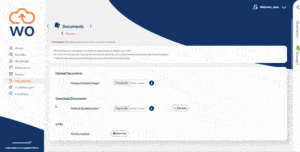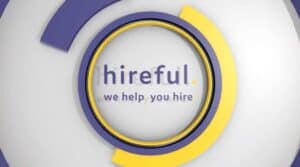How much paper does your organisation use to handle its new hires? If you’re like most companies, it would be enough to build a decent sized bonfire of paperwork this November 5th.
Providing fuel to the fire would be everything from contracts and offer letters to policy docs and welcome packs. It would include bundles of forms and checklists and printouts and…well, you get the idea.
This is because employee onboarding remains one of the few areas of administration within the business world where paper still dominates; it’s the primary way to exchange information.
More than a third of UK businesses (68 percent) still use manual methods to handle this crucial stage of the hiring process, which starts the moment a successful job applicant is selected.
How to remove onboarding paperwork
But this is a mountain of paperwork that can be easily removed – without the need for anything going up in smoke. It’s the ability to operate paper-free which provides the core benefits of a switch to a cloud-based onboarding management system.
Using a traditional approach, one of the first onboarding tasks is typically having to mail out offer letters and contracts, which will need to be signed and returned before the rest of the process begins – which can often take weeks.
Webonboarding removes the need to physically handle documentation with secure digital signing allowing all paperwork to be processes in a fast, efficient and user-friendly way. All of the communications between HR, hiring managers and onboardees are managed through an online portal.
Benefits of automated systems
The benefits of removing paper processes go far beyond the environmental factors – 42 percent of all trees harvested are for the paper industry. It fundamentally changes the way that HR is able to manage and monitor onboarding.
The switch to real-time data allows processes to be automated – eliminating the need for slow, tedious and error prone manual tasks, with large amounts of information having to be transferred by hand into HR systems.
By cutting the time it takes to process new hires, organisations are able to reduces the risk of candidates dropping out. A 2017 global survey found that 39% of employees encounter problems during onboarding, causing 15% to drop out.
A streamlined and paper-free process lets HR focus on improving the onboarding experience which properly integrates new hires into the organisation. Instead of having to mail out welcome packs, the online portal allows any kind of media to be shared – from company videos and PDFs to handy web links to local clubs and societies.
Don’t get burnt by data compliance
Paper-based operations also helps to minimise the onboarding risks that are posed by data compliance breaches, particularly relating to the recently introduced GDPR (General Data Protection Regulation) legislation.
Trying to ensure the accuracy and relevance of large amounts of employee information becomes an uphill struggle when it’s being stored on a multitude of paper documents and forms. It creates an onboarding process in which legacy and duplicate data becomes hard to avoid.
It’s a serious issues as the potential punishments for any breaches of the European Union legislation include fines of up to €20 million, or four percent of annual turnover. With the rules only recently having come into force, it’s something all businesses need to take seriously.
So if you’re looking to give your hiring team that extra spark this Bonfire Night, maybe it’s time your started plotting a paperless way to manage and monitor new hires.




